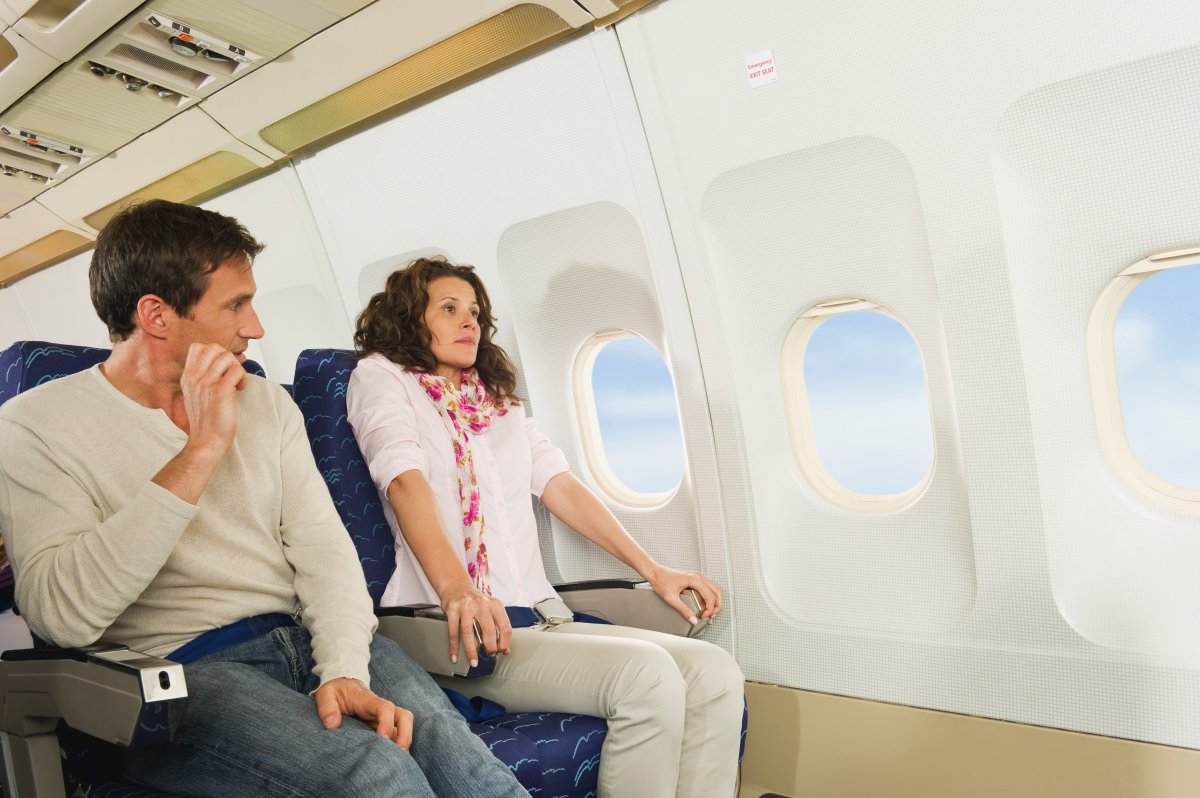For anyone who has a fear of flying, even a short period of time on an airplane can cause anxiety.

Christine Korol, a registered psychologist based in Vancouver, says for the most part, there are two common reasons people are scared to fly: afraid of a plane crash resulting in death, or fear having a panic attack while being trapped on a plane.
A recent essay from the New York Times reveals people may also feel more anxiety as of late due to an “era of terror.”
“Usually, people just avoid flying,” Korol tells Global News. “If they do have to fly for a wedding or a funeral — or some other forced reason to go — they show up for treatment a week before the flight.”
READ MORE: ‘High-functioning’ anxiety: it’s not a diagnosis, but many say it’s real
Korol adds while this is one way to control your anxiety, most experts recommend coming two to six months prior to your trip (if possible).
Fears and statistics
According to an ’80s U.S.-based report on the fear of flying, researchers found 18 per cent of participants were anxious about flying, and 12.6 per cent were afraid.
People feared mechanical issues on the plane, flying in bad weather, flying at night and flying over water. Flyfright.com, a news site for flying-related material, adds women were twice as likely to experience the fear of flying.
READ MORE: Mindfulness and anxiety
The Transportation Safety Board of Canada reported 251 aviation accidents in 2015, an eight per cent decrease over a five-year period. There were 23 fatalities.
“The 2015 estimate of flying activity is 4,353,000 hours, and the accident rate for Canadian-registered aircraft was 5.1 accidents per 100,000 flying hours, an increase from the previous year’s accident rate of 4.8,” the board notes.
To put that in perspective, in 2014, there was a reported 1,834 motor vehicle fatalities in Canada.
How to cope with the anxiety
Korol says there are a few steps people can take when it comes to the fear of death via flying.
“We can do some work about understanding flying and looking at the real risks to challenge some of their assumptions,” she says. “The next step is to use imagery to visualize their flight. I usually get them to describe the scene where they see themselves packing for the trip, getting to the airport, checking in, waiting at the gate and boarding the plane.”

She adds that she looks over the script, and looks for “hot spots” in their story where they are fearful.
And for people who are fearful of panic attacks, Korol says she teaches them the physical symptoms of anxiety.
“We might induce panic-like sensations in the session by hyperventilating together,” she explains. “For practice, I might have them find somewhere they can’t ‘escape’ to bring on the symptoms of panic and not leave. This will help them trust that they can have a panic attack on the plane and be OK.”
When you’re on the plane
Korol says for the most part, distractions while you’re on the flight don’t work either — this won’t help you get over the fear of flying.
“Distraction may help you white knuckle your way through the flight, but if you were properly treated, you don’t need it,” she says. “Instead of distractions, bring a ‘cheat sheet’ of your coping strategies or self-statements.”
Remind yourself that other passengers are not choking or anxious, for example, and keep telling yourself why you want to fly.
READ MORE: A new study suggests a potential link between anxiety and depression
“The idea is that you go on the flight ‘as if’ you are not afraid of flying and conduct yourself accordingly. You can even have a coffee if you like — the best way to treat the symptoms is to bring on the symptoms and do it anyway.”




Comments